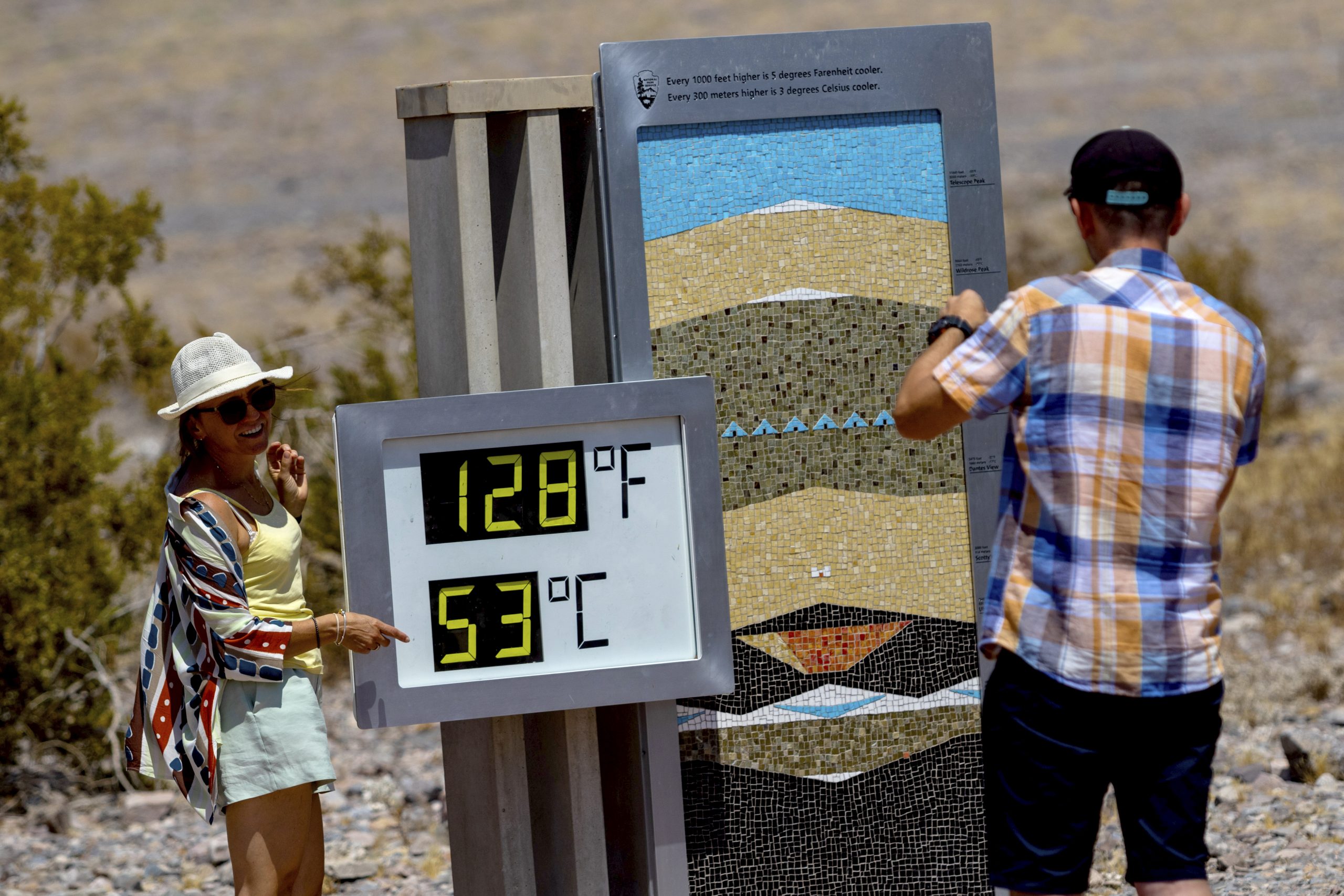
Summer 2024 has brought intense heat waves to various parts of the United States, with millions of people facing heat warnings in the west and oppressive humidity in the east.
On July 7, Death Valley recorded a dangerous temperature of 129 degrees Fahrenheit (53.9 C), resulting in a tragic incident of a motorcyclist succumbing to heat exposure. Las Vegas also broke its previous heat record, reaching 120 F (48.9 C). The persistent triple-digit temperatures in California have contributed to wildfires, while Oregon has reported multiple suspected heat-related deaths.
The impact of extreme heat is not limited to the U.S. alone, as countries worldwide have been experiencing record temperatures in 2024. The European Union’s Copernicus climate service revealed that each of the past 13 months has been the hottest on record globally, with June being the hottest. The average temperature over the previous 12 months was found to be at least 1.5 C (2.7 F) warmer than the pre-industrial average of 1850-1900.
The significance of the 1.5 C warming threshold established in the Paris climate agreement is crucial to understand. It signifies the goal to limit global warming to 1.5 C over a 30-year period to reduce natural fluctuations. While Earth has only surpassed this threshold for a single year so far, the trend is alarming, with projections indicating a likely crossing of the 30-year average threshold within the next decade.
Researchers studying weather patterns involving heat emphasize the danger posed by the early onset of extreme heat, which is part of a broader trend of human-induced global warming.
Heat-related challenges are emerging on a global scale.
Throughout 2024, unprecedented heatwaves have impacted numerous countries across the Americas, Africa, Europe, and Asia. Regions like Mexico and Central America have suffered from severe water shortages and fatalities due to a combination of prolonged heat and drought since spring 2024.
In Saudi Arabia, tragedy struck during the Hajj pilgrimage to Mecca, with over 1,000 individuals collapsing and perishing as temperatures spiked to 125 F (51.8 C) at the Grand Mosque on June 17.
In Pakistan, hospitals in Karachi were inundated by high temperatures, frequent power cuts, and water scarcities. Meanwhile, India experienced temperatures around 120 F (48.9 C) for several days in April and May, impacting millions who lacked access to cooling facilities.
Greece saw temperatures exceeding 100 F (37.8 C) for extended periods in June, resulting in the deaths or disappearances of several tourists who ventured out into the hazardous heat and humidity.
In Tokyo and more than half of its prefectures, Japan has issued warnings about heatstroke as temperatures soar to historic levels at the beginning of July.
Understanding the impact of weather: It’s more than just a summer trend.
Despite heatwaves being a natural occurrence in the climate, the intensity and widespread nature of the heatwaves in 2024 are uncommon. According to a scientific evaluation of the extreme heatwave in the eastern United States in June 2024, the severity and duration of such heat were found to be two to four times more probable due to human-induced climate change. This conclusion is consistent with the rapid rise in heatwaves in the U.S. in recent years, often happening beyond the traditional summer peak.
These unprecedented heatwaves occur in a climate that is globally over 2.2 F (1.2 C) warmer than it was before the industrial revolution, based on a 30-year average. While a degree or two may seem insignificant in daily life, even small increases significantly affect the worldwide climate.
During the peak of the previous ice age around 20,000 years ago, the average global temperature was only approximately 11 F (6 C) cooler than it is today. Therefore, it’s no surprise that a warming of 2.2 F (1.2 C) is rapidly transforming the climate.
If you believe this is sweltering…
Although this summer could be one of the hottest in history, it might also be among the milder summers in the years to come.
Vulnerable groups such as young children, elderly individuals, and outdoor laborers face even greater risks. Individuals in low-income communities, where air conditioning may not be affordable, and renters, who often lack cooling protections, will encounter increasingly hazardous conditions.
Extreme heat can have economic consequences, such as warping railroad tracks and causing wires to droop, resulting in transportation delays and interruptions. High demand can strain electrical systems, leading to power outages when cooling is most necessary.
The positive news is that there are ways to address these issues.
The outlook in a warming world may be challenging, but advancements are being made. In the United States, the 2022 Inflation Reduction Act aims to reduce greenhouse gas emissions by nearly half by 2035.
Transitioning from air conditioners to heat pumps and communal geothermal systems can lessen fossil fuel emissions and offer cooling at lower prices. The cost of renewable energy is progressively decreasing, and numerous nations are enhancing policy assistance and incentives.
There is much that humanity can achieve to curb future warming if nations, businesses, and individuals take prompt action. Swiftly diminishing fossil fuel emissions can help prevent a hotter future with even more severe heatwaves and droughts, while also delivering advantages like enhanced public health, job opportunities, and reduced environmental risks.